
According to Textile India, India’s textile & apparel industry (domestic sales & exports) is expected to grow from the current $70 billion to $220 billion by 2020. The day-to-day functioning of textile industry, intense competition and enormous cost pressure place special demands on the manufacturer of textile machines. This industry is increasingly facing the challenges posed by rising production rates, maximum availability, high flexibility, optimum product quality and minimum lifecycle costs. Today the industry scouts for a one-stop solution provider who offers technology right from raw material processing to the final product. As a system supplier, SIEMENS addresses the complete range of machines for finishing continuous material webs.
Our portfolio, SIMOTION D & SINAMICS S120, for automation and drive technology, ensures latest state-of-the-art technology, customized functions & outstanding quality, mechatronically optimized machine concepts, high degree of flexibility, increased cycle rates, shortened changeover times and reduced maintenance costs.
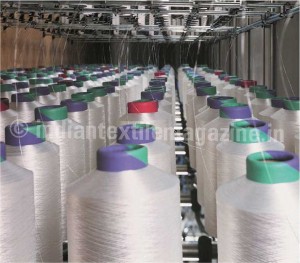
Typically in stenter frames, in any textile plant, Drive Control Chart (DCC) for separate chain application is in-built in the drive for control of transport chain drives. Using this application, two chains guide the material web in angular synchronism through the machine to achieve precise alignment of the material web at the thread level. This application enables angular synchronous gearing between two endlessly rotating rotary axes with a fixed ratio of 1. During synchronous operation a relative offset between the axes can be set.
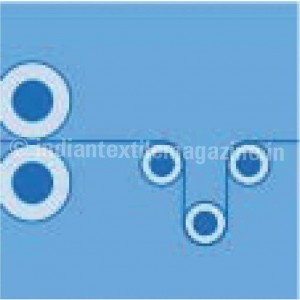
To counter harmonics, Harmonic Wave Compensation application is helpful indeed. Thanks to this feature, speed controller is relieved and speed ripple is reduced drastically. Independent compensation of up to three sinusoidal periodic torque harmonics can be accomplished.
To set the required material tension and/or to ensure correct material transport through the machine, the standard DCC Line Tension Control application feature includes closed and open-loop control modes such as tension control by limiting torque, tension control by speed adaptation and dancer-roll position control by speed adaptation.
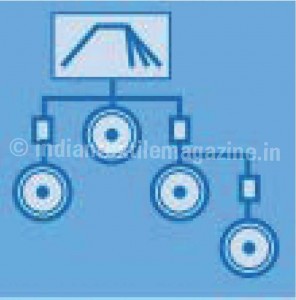
Additional functions such as torque pre-control (tension, friction, acceleration) and line operation without closed-loop control are also feasible. The ‘torque pre-control’ feature is suitable for web-type materials in the textile industry. Typically the components involved in the closed-loop control are part of a larger system/machine, which may include several tension zones and winders.
For larger production lines involving a minimum of eight drives, DCC Set point Cascade application feature integrated in drive allows the ‘velocity cascade’ to be calculated in the drive. The system ramp-function generator, for the complete production line, is coupled to the higher-level controller. Communication to the PLC can be realized via PROFIBUS or PROFINET. To control the overall cascade, a separate set point cascade is used for each drive. In a nutshell, this feature can be overviewed as group set point or supplementary set point, for closed-loop dancer roll control and individual operation.
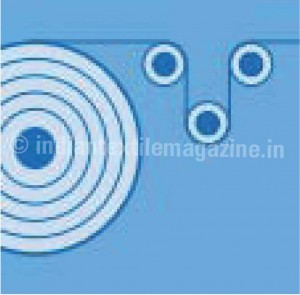
In a textile machine, winder or unwinder can be implemented for the widest range of applications with the DCC winder application feature. The winder functions such as closed-loop dancer roll position control with speed correction, closed-loop tension control with torque limiting, closed-loop tension control with speed correction, integrated diameter calculation using the ratio between the material web velocity and winder speed, etc., are available for addressing a wider range of winder applications.
Coupled axes are used in a large number of machines. The coupling can either be rigid, i.e., direct, or flexible, i.e., through the material web itself. In both cases load must be distributed between the coupled drives. The in-built feature of ‘Load sharing application’ offers torque de-coupling on the control, torque limiting and droop compensation. Therefore, this correctly adjusted load distribution leads to lesser heat generation and enhanced energy efficiency.
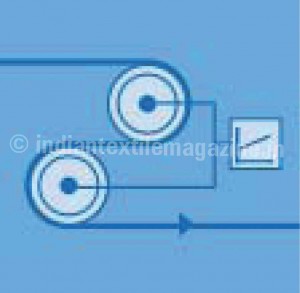
Many years of experience, in-depth industry know-how, high level of technological competence and flexible manufacturing system enable the textile industry to respond to market demands with a higher degree of innovation. From the production of chemical fibers, spinning and yarn production, fabric manufacturing to finishing, Siemens provides solutions from a single source to the customer and further supports through value-added services.